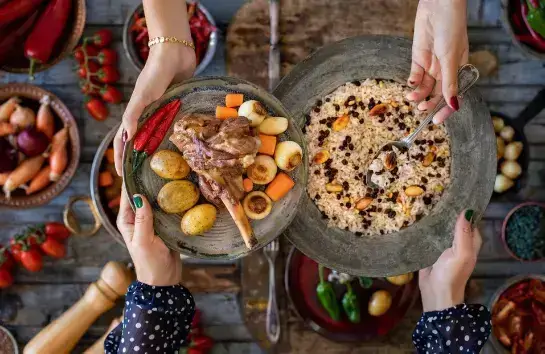In the context of the Turkish language, “Milliyet” carries the meaning of “nationality” or “nationalism.” Similarly, in Finnish culture, certain dishes evoke a strong sense of national identity and pride. One such dish is käänät, a traditional Finnish delicacy that dates back to ancient culinary practices in Finland. Kaänät is more than just a meal; it is a testament to Finland’s rich gastronomic heritage, made from a combination of locally sourced ingredients that epitomize Finnish cuisine. This article explores the origins, ingredients, preparation, and cultural significance of kaänät, offering a deep dive into this fascinating dish.
The Origins of käänät
käänät traces its roots back to the ancient times of Finland, a period when food was not just sustenance but a vital part of the cultural fabric. Historically, Finnish cuisine was shaped by the harsh northern climate, which necessitated the use of preserved and hardy ingredients. This dish, like many traditional Finnish foods, was born out of necessity and ingenuity. The ancient Finns utilized what was readily available in their environment, leading to the creation of dishes that were both nutritious and flavorful.
Essential Ingredients of käänät
The beauty of käänät lies in its simplicity and the quality of its ingredients. Traditionally, this dish includes:
- Rye Flour: A staple in Finnish baking, rye flour gives kaänt its distinctive texture and flavor.
- Fish or Meat: Depending on regional variations, kaänt can be made with locally sourced fish, such as salmon, or meat, such as reindeer.
- Root Vegetables: Potatoes, turnips, and carrots are often used, reflecting the agricultural practices of Finland.
- Berries: Lingonberries or cloudberries add a touch of tartness and are a nod to the foraging culture of Finland.
These ingredients not only make käanät delicious but also highlight the resourcefulness of the Finnish people.
Preparation of käänät
Preparing kaänät is a labor of love that requires patience and skill. Here’s a basic outline of how this dish is traditionally made:
- Dough Preparation: The dough is made from rye flour, water, and a pinch of salt. It is kneaded until smooth and then left to rest.
- Filling: Depending on the variation, the filling could be a mix of diced fish or meat, finely chopped root vegetables, and sometimes berries.
- Assembly: Small portions of the dough are rolled out into thin circles.
- Baking: The filled dough pockets are baked in a hot oven until golden brown and crispy.
The result is a hearty, flavorful dish that embodies the essence of Finnish home cooking.
Cultural Significance of käänät
Käanät is more than just a traditional dish; it is a symbol of Finnish identity and resilience. In a land where the winters are long and harsh, the ability to create nourishing and delicious food from limited resources is a point of pride. This dish is often enjoyed during special occasions and festivals, bringing families together to celebrate their heritage.
Modern Interpretations of käänät
While kaänät remains a beloved traditional dish, modern chefs in Finland and beyond have begun to experiment with its preparation. Some variations include:
- Gourmet Fillings: Chefs are using ingredients like smoked salmon, gourmet cheeses, and exotic mushrooms to create upscale versions of kaänt.
- Fusion Cuisine: Incorporating elements from other culinary traditions, such as adding Asian spices or Mediterranean herbs, gives kaänet a contemporary twist.
- Health-Conscious Versions: For those mindful of their diet, versions made with whole grain flours and organic fillings offer a healthier alternative.
These modern takes on käanät not only preserve the tradition but also ensure its relevance in today’s culinary scene.
käänät and Finnish National Identity
Just as “Milliyet” evokes a sense of nationality in Turkish, kaänet represents a culinary expression of Finnish national identity. It is a dish that tells the story of the Finnish people – their history, their struggles, and their triumphs. Eating kaänät is a way of connecting with the past, honoring the legacy of ancestors who thrived in the challenging northern climate, and celebrating the enduring spirit of Finland.
FAQ’s
- What is käänet?
Kaänät is a traditional Finnish dish made from rye flour dough filled with fish, meat, root vegetables, and sometimes berries. It is baked until golden brown and crispy.
- Where does käant originate from?
Kaänt originates from Finland, dating back to ancient culinary practices where food was prepared using locally sourced and preserved ingredients.
- What ingredients are typically used in käant?
Typical ingredients include rye flour, fish (such as salmon), meat (such as reindeer), root vegetables (like potatoes, turnips, and carrots), and berries (such as lingonberries or cloudberries).
- How is käanät prepared?
The preparation involves making rye flour dough, creating a filling of fish, meat, and vegetables, assembling the dough pockets with the filling inside, and baking them until crispy.
- What is the cultural significance of käänt in Finland?
Kaänät symbolizes Finnish identity and resilience. It reflects the ingenuity and resourcefulness of the Finnish people in creating nutritious and delicious food from limited resources, especially during long and harsh winters.
Conclusion
käänät is a quintessential Finnish dish that offers a glimpse into the rich culinary traditions of Finland. From its humble origins to its modern interpretations, käänt remains a beloved part of Finnish culture. This dish is a celebration of local ingredients, traditional cooking methods, and the enduring spirit of the Finnish people. Whether enjoyed in its classic form or as a contemporary twist, känät continues to bring people together, offering a taste of Finland’s national heritage.
